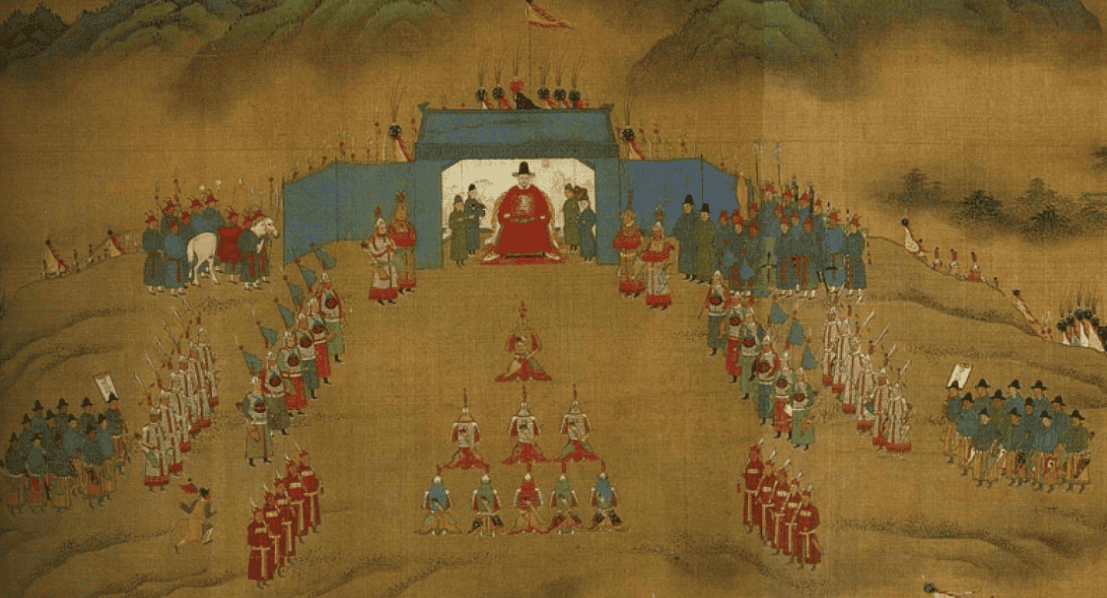The trajectory of an economy’s development can often be better understood through the historical experiences of its populace. This column investigates the long-term impacts of the fall of the Ming dynasty on socioeconomic status, tracing the effects of this historical shock over five generations covering a time span of 300 years. The findings highlight that long before the availability of comprehensive official data, Chinese family genealogies are a valuable resource for reconstructing economic evolution over time.
For decades, researchers have debated whether it is more important to focus on the prosperity of places or of people (Winnick 1966, Glaeser 2005). Some aspects of the question are straightforward. Most importantly, it is the wellbeing of people – not places – that matters in economic welfare analysis, since geographic locations themselves have no intrinsic value (von Neumann Whitman 1972). The distinction between place and people becomes meaningful only when migration occurs – without it, the economic trajectory of a place would mirror that of its residents. Nevertheless, despite the complications migration introduces for targeting policy, many interventions continue to be framed in terms of geography – so-called ‘place-based policies’ (Kline and Moretti 2014) – in part because geographic locations, rather than individuals, often serve as more practical units for redistribution (Austin et al. 2018).
There is much to gain from integrating the perspectives of people-based and place-based analyses, and recent studies have started to bridge this gap. For instance, Autor et al. (2025) examine how US labour markets have adjusted to increasing Chinese import competition, using two decades of data that captures both geographic units (commuting zones) and individual workers. If relatively small disruptions – like parental job loss – can negatively affect the next generation’s wellbeing (Oreopoulos et al. 2008), then larger historical shocks – such as the Black Death or colonial rule – are likely to have even more enduring effects, persisting across multiple generations (see Pamuk 2007 and Dell 2010, respectively).
To investigate long-term impacts from both geographic and generational perspectives – before the availability of official intergenerational data – in a recent paper we use Chinese family genealogies to examine how the fall of the Ming dynasty affected elite behaviour in Central China (Shiue and Keller 2024). The transition from the Ming (1368–1644) to the Qing dynasty (1644–1911) is widely considered one of the deadliest civil conflicts in history, leading to the death of roughly 16% of China’s population and causing extraordinary devastation in Tongcheng county, Anhui province – the region at the centre of our study.
Chinese genealogies are privately maintained family records, typically organised in the form of a pedigree chart. While these records are rooted in the cultural importance of ancestor worship, they have also historically played significant economic roles – supporting the allocation of property rights, tax administration, and the provision of public goods. Estimates suggest that between 50,000 and 100,000 such genealogies still exist today. Though their level of detail and completeness varies (Telford 1986), the seven genealogies we analyse contain not only standard demographic data – such as dates of birth and death, marriages, and number of children – but also information on social status, residence, and burial location.
We leverage geographic variation in exposure to the Ming dynasty’s collapse by comparing regions that experienced severe destruction with those that were less affected, using mortality data from the decade of most intense violence (1634–1644). Our analysis traces the long-term effects of this historical shock over five generations, covering a time span of 300 years.
Figure 1 indicates that exposure to the Ming shock was more limited in relatively peripheral and mountainous areas.
Figure 1 Treatment versus control places in Tongcheng county


The treatment assignment for couples who lived during the Ming to Qing transition is extended to all their respective descendants in the following four generations. This is shown in Figure 2, with treated five-generation family lines on the right and control family lines on the left.
Figure 2 Treatment of people over five generations


The key outcome variable in our analysis is elite status, defined by participation in China’s civil service examination system (keju), a highly competitive, tournament-style selection process. Drawing on data from two generations prior to the Ming collapse, we show that elite families were distributed in roughly equal proportions across both treatment and control areas.
Using a sample of approximately 1,600 distinct family lines tracked across five post-shock generations, we employ least squares regressions to demonstrate that residing in a village heavily affected by the fall of the Ming dynasty significantly reduced the likelihood of attaining elite status. This finding is consistent with the idea that disruptions – including civil war violence, local peasant uprisings, and famine – would have hindered educational preparation in more exposed places. Yet, our results also reveal a reversal over time: in generations three through five, descendants of families from exposed areas are more likely to achieve elite status than those from less affected regions (Figure 3).
Figure 3 Treatment of people versus treatment of places


Figure 3 presents the cumulative treatment effect on individuals, measured at the level of family lines (as defined in Figure 2). The upward slope from generations three to five indicates that descendants of families exposed to the fall of the Ming dynasty achieved elite status at higher rates than those in the control group. By the fourth generation, the typical treated family line had not only recovered from the initial loss experienced by its first-generation ancestors but had surpassed it. This pattern reflects a clear reversal of fortunes in elite attainment when the analysis is conducted at the individual, or people-based, level.
We contrast this treatment of people with the difference in elite attainment in historically treated versus control places in each generation for the exact same sample. We refer to the latter, shown cumulatively as the lower dashed line in Figure 3, as treatment of places. It is equal to the average elite attainment difference in the green circle villages and the red triangle villages shown in Figure 1.
While the treatment effects on people and places align in the first generation, Figure 3 reveals that their trajectories diverge in subsequent generations. This distinction underscores the importance of analytical perspective: whether one examines the long-run adjustment of geographic locations or of the individuals living through the historical shock can yield qualitatively different conclusions. Notably, the treatment of places does not exhibit a reversal of fortunes in elite attainment – even by the fifth generation – whereas the treatment of people does. In this context, individuals appear more resilient than the places they inhabit.
The divergence between the treatment of people and the treatment of places, as shown in Figure 3, is driven by migration – that is, the movement of individuals across geographic locations. Specifically, some family lines initially exposed to the shock in the first generation had relocated by the second generation to villages that had not experienced the same level of destruction. To fully understand why patterns of prosperity differ between people and places, it is essential to examine how migrants differ from the populations that remained in their original locations.
In our paper, we report that just over 3% of treated family lines – 46 out of all those treated – migrate to non-exposed locations by the second generation. Migration rates for this historical era tend to be low, and the transition from the Ming to the Qing dynasty might have temporarily increased migration costs further.
Importantly, the treated families who do migrate differ systematically from those who remain in shock-exposed villages. First, migrant families tend to be younger: on average, men in out-migrating lines are ten years younger, and women eight years younger, than their counterparts in families that stayed. Second, these migrating families were more affluent in the first generation: they were more likely to include individuals with elite status, to have a higher number of sons, and to display other indicators of socioeconomic advantage. These patterns are consistent with broader findings on the determinants of migration, where younger and wealthier individuals are more likely to move.
In this context, migrants are positively selected – a key factor underlying the divergence between the treatment-of-people and treatment-of-place effects shown in Figure 3. To explore this distinction more systematically, we perform separate regression analyses for two subsets of treated family lines: those who, in the current generation, continue to reside in historically exposed locations (‘stayers’); and those who have relocated to historically non-exposed areas (‘movers’). Figure 4 compares elite attainment across these two groups, highlighting how migration reshapes long-run outcomes.
The results for stayers in Figure 4 closely resemble the treatment-of-people estimates presented in Figure 3, which is consistent with the relatively limited migration between historically exposed and non-exposed areas.
However, among those treated family lines that do relocate, elite attainment tends to be higher than for those who remain in shock-exposed villages. This difference is particularly pronounced in the second generation. As shown in Figure 4, family lines that migrate recover from the first-generation loss more rapidly, achieving full recovery by the third generation, whereas those who remain in historically exposed locations do not reach similar levels of elite attainment until the fourth generation.
Figure 4 Treated family lines that move versus treated family lines that stay


Another important factor behind the reversal in elite attainment observed in Figure 3 is a shift in values among treated family lines following the shock. Specifically, families exposed to the fall-of-Ming destruction appear to have placed greater emphasis on socially acceptable behaviour, distancing themselves from the kinds of tax evasion and corruption that had contributed to local uprisings against elites during the broader context of Ming-Qing warfare in Tongcheng. In this setting, a renewed focus on the civil service examination was a natural response, given the high social prestige accorded to its successful candidates.
Couples who lived through the shock in exposed villages likely experienced intense violence and hardship first-hand, shaping their worldviews and responses to instability. In our paper, we provide evidence that these experiences were transmitted more strongly across generations in treated family lines than in control family lines.
In particular, we find that the degree of intergenerational persistence in elite attainment is significantly higher among treated families after the fall of the Ming dynasty – but not prior to it. This persistence is especially pronounced in family lines where both parents and their sons had overlapping lifespans, allowing for extended face-to-face interaction and direct transmission of values and knowledge.
A limitation of our analysis is that it relies on a sample rather than a comprehensive census of all individuals and locations in this region of China. Furthermore, our study follows a cohort-based design, with no new entrants added over time. As a result, the representativeness of the sample diminishes over the long horizon of the study: the economic conditions of Tongcheng in the 1800s are likely captured less accurately than those of the 1600s.
Recent research has begun to integrate people-based and place-based perspectives in the context of advanced economies such as the US (Bloom et al. 2024, Pierce et al. 2024). However, these studies typically concentrate on the recent past and are limited to within-generation analyses. A promising avenue for extending the temporal scope of such work is intergenerational linking across historical censuses, which can help construct long-horizon ‘people’ datasets for some countries dating back to the 1800s. However, these datasets also face limitations: despite their size, they are not fully representative, and even with the addition of crowd-sourced genealogical data, low linkage rates remain a significant challenge.
In sum, integrating people-based and place-based perspectives offers valuable insights into the long-run processes of economic development. Take the Ruhr region in western Germany, a long-established industrial centre. Its emergence was closely tied to natural resource endowments – particularly coal – with mining beginning in the early 19th century. However, the region’s full trajectory – its industrial expansion, prolonged growth, eventual decline, and future potential for structural transformation – cannot be fully understood without considering the role of individuals and families. The intergenerational transmission of occupations (“coal miner, like father, like son”) highlights how economic identities are deeply rooted in social and familial – that is, people-based – networks.
Source : VOXeu





